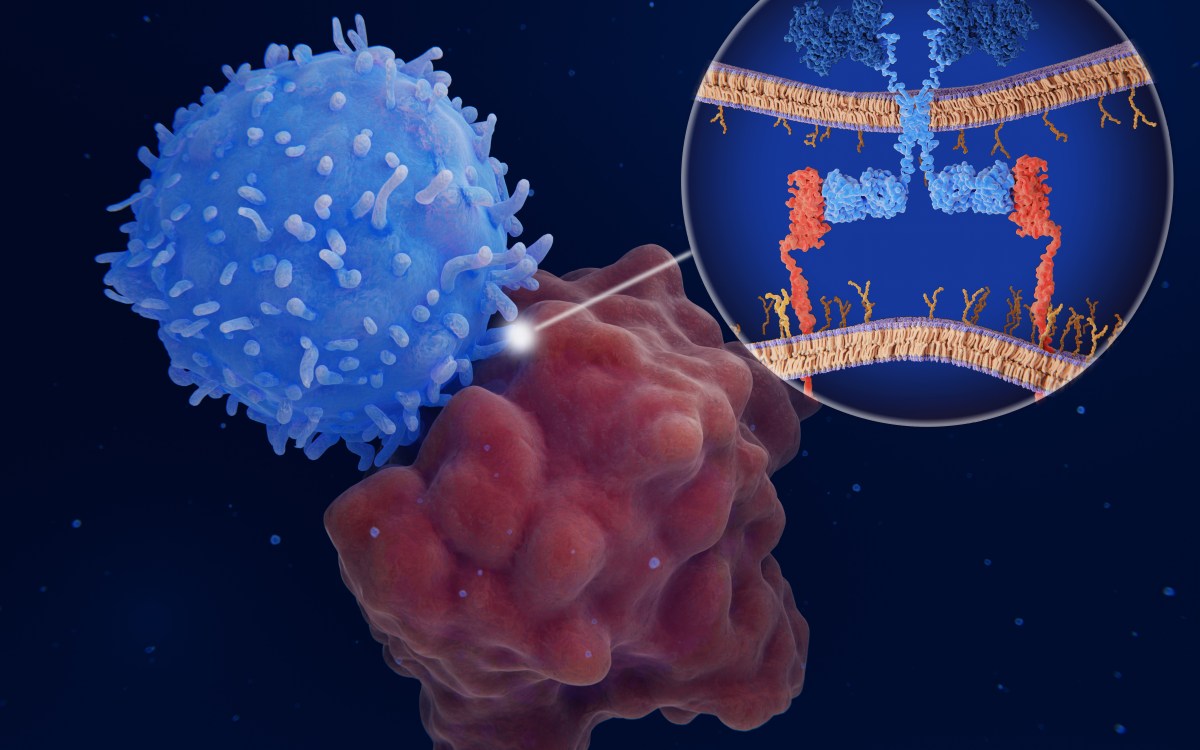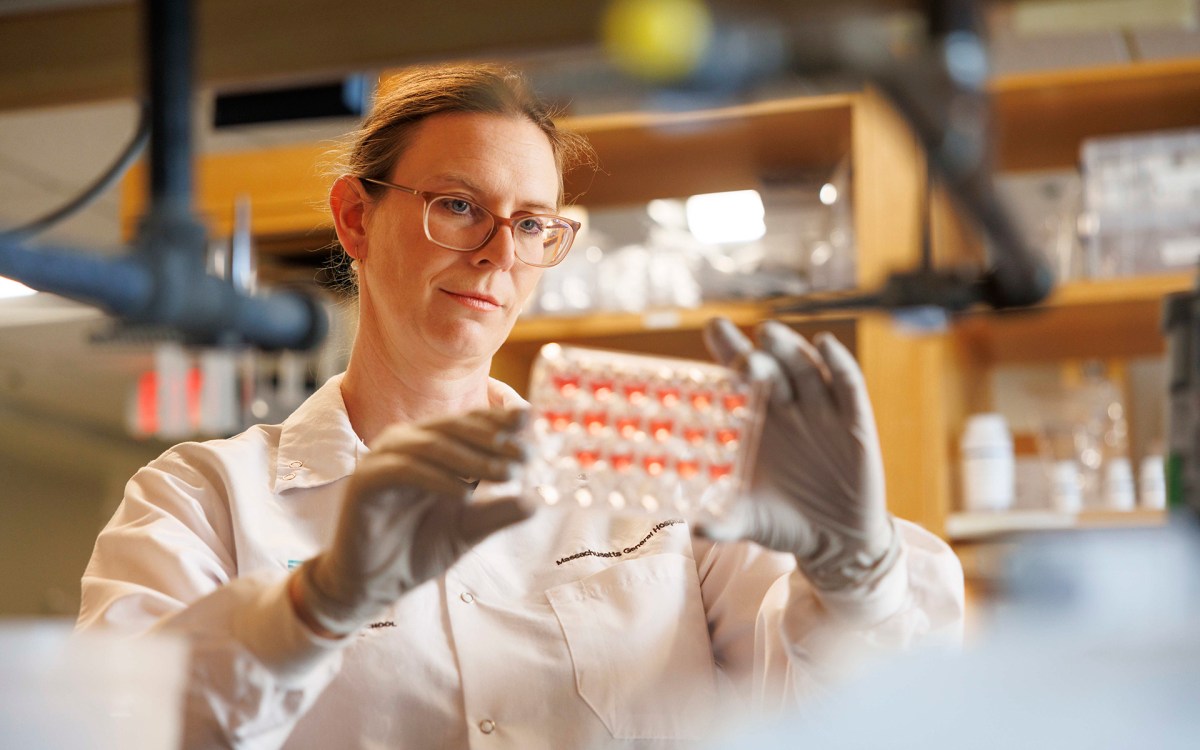Harvard athletes grow bigger, better hearts
Their experience may help nonathletes
Strenuous exercise can cause a heart to grow as much as 10 percent and its chambers to enlarge, Harvard researchers have discovered after testing the University’s athletes.
What they are learning from these studies could someday be applied to advising nonathletes about caring for their hearts.
“During a season of athletic training, we found changes in cardiac structure and function that may eventually give us the ability to prescribe different types of exercises to treat different kinds of heart disease,” says Aaron Baggish, a cardiologist at Massachusetts General Hospital, a Harvard teaching facility. “The new information might also lead to improved techniques and tools to screen athletes and others for undetected abnormalities associated with sudden cardiac death.”
Different types of disease can enlarge a heart, cause wasting, or lead to improper filling or pumping of blood. Baggish and his colleagues reasoned that they might learn enough about ways that exercise affects heart function to use that knowledge to treat such malfunctions. So, he and other researchers at Massachusetts General Hospital and Harvard University Health Services huddled with coaches to determine how best to study University athletes to understand changes brought about by sustained, high-intensity effort.
They decided to measure how the hearts of male football players and male and female rowing teams change as they train for events like the traditional Harvard-Yale game or an annual crew competition on the nearby Charles River. Seventy-five athletes agreed to let the researchers do electrical and ultrasound measurements of their hearts before they began training in the summer, then again in fall when coaches predicted the athletes would be at or near their fitness peaks.
Although analysis of the data is still in progress, Baggish says, “some exciting findings are starting to emerge.” Three months of study reveal that the mass of the football players’ hearts increased 8 to 12 percent. Their heart walls thickened while the chambers they enclose remain the same size or got smaller.
Oarswomen and men did not gain as much heart tissue, but the cavities that receive and pump blood grew larger. The most surprising finding was that the left ventricle, the chamber that pumps blood into most arteries, grew “quite dramatically,” in Baggish’s words. “While such growth has long been associated with athletic training, the rapidity and magnitude of the changes far exceeded our expectations.”
Endurance vs. strength
The expanded chambers may well be an adaptation to the higher volume of blood being pumped in sustained aerobic activity. If so, athletes and trainers should see the same increase in runners, cyclists, swimmers, and others who do intense aerobic exercises.
Football, on the other hand, requires relatively shorter bursts of effort usually associated with higher than normal blood pressure. The heart seems to increase its muscle mass to deal with this. In doing so, it loses some of its ability to relax as completely as it did before, which affects refilling of the chambers. This finding could have applications in dealing with people whose hearts are stressed and stiffened by continuous high blood pressure.
“Much more work needs to be done before we can reach conclusions that lead to recommendations,” Baggish admits. “But it may be that strength training is a bad idea for people with some types of heart disease. It might accelerate thickening of the heart walls to an abnormal level. A better course might be aerobic exercises such as running or cycling. It’s still conjecture at this point, but this is the kind of advice we are working toward.”
Next fall, the medical team will continue to test athletes. The researchers want to follow the same footballers and rowers for two or three seasons to measure the effects of years of training. Such follow-ups will include measurement of oxygen consumption to correlate with the kinds of changes in heart they have already documented. A primary goal of this effort, Baggish notes, will be to help coaches, trainers, and the athletes determine what specific properties of the heart make high performance possible.
Avoiding sudden death
Another aspect of this research is the question of sudden cardiac death. We’ve all heard about tragic cases of athletes with no obvious symptoms of heart disease who suddenly die during competition. “Techniques are available for screening athletes before they participate in strenuous activities, but at present there is no consensus on how best to do this,” Baggish says.
One solution involves on-site testing. Until recently, the size of testing equipment demanded that people be brought to it, not the other way around.
Baggish and his colleagues have been testing a new portable ultrasound device to produce diagrams of heart activity and change of shape. “The device is as portable as a laptop computer versus the washing machine-size equipment you see in hospitals,” he notes. Harvard and Mass General Hospital cardiologists have also used the gadget successfully to study the hearts of those who completed Boston Marathons in 2004 and 2005, and intend to do so again in 2007 (see “Marathon running can damage a heart,” /gazette/2007/02.01/99-marathon.html). Involved in the hearty athletic research with Baggish are Malissa Wood, Dolph Hutter, Frank Wang, and Arthur Boland.
“Testing this device is a totally new goal from what we started out to do,” Baggish says. “Providing on-site screening appears to be feasible, and we’re very excited about continuing to explore the possibilities.”
Of course, the same things that are done for athletes can also be done for nonathletes.





